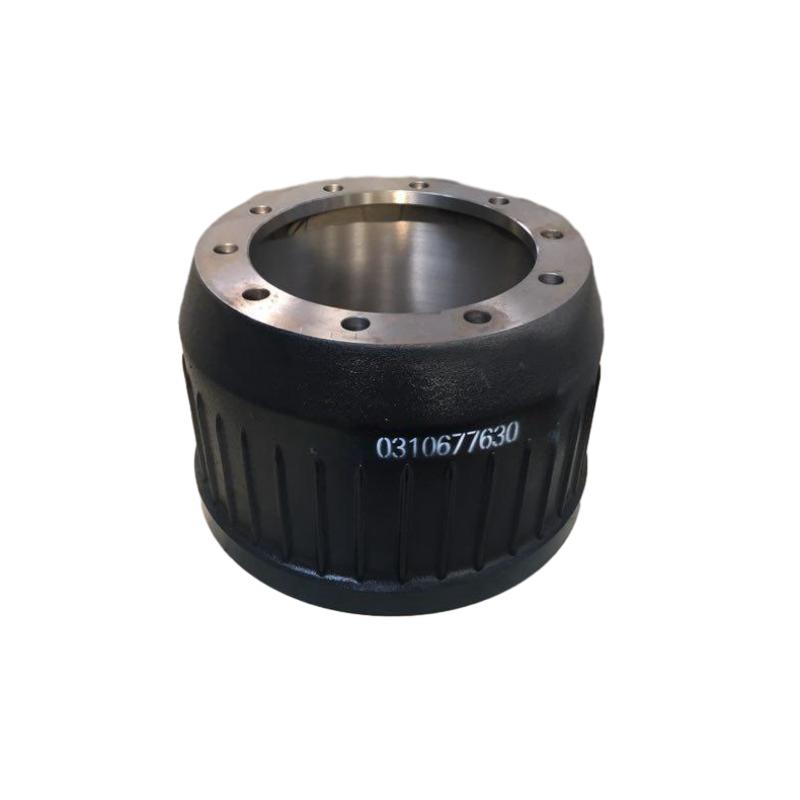Lug . 24, 2024 02:39 Back to list
When Should You Consider Replacing Your Brake Drum for Optimal Vehicle Performance and Safety
When to Replace Brake Drums A Comprehensive Guide
Brake drums are critical components of a vehicle's braking system, especially in vehicles equipped with drum brakes. They provide the surface against which brake shoes press to create the friction necessary to slow down the vehicle. Understanding when to replace brake drums is vital for safety and performance. This guide will outline the signs indicating that it’s time to replace your brake drums, the factors that affect their lifespan, and the consequences of delaying replacement.
Signs It's Time to Replace Brake Drums
1. Unusual Noises One of the first indicators of worn-out brake drums is noise. If you hear grinding, squeaking, or squealing noises when applying the brakes, it's a clear sign that your brake components, including the drums, may be worn out. These sounds can occur due to the brake shoes rubbing against the drum's surface or a debris buildup.
2. Vibration or Pulsation If you feel a vibration or pulsing sensation in the brake pedal when applying brakes, it may indicate that the brake drums are warped or unevenly worn. This can affect the braking performance and should be investigated promptly.
3. Reduced Performance When you notice that your vehicle takes longer to stop or the brake pedal feels softer than usual, it could signal that the brake drums are no longer effective. This decrease in performance can be attributed to worn brake shoes or drums, leading to insufficient friction.
4. Visual Inspection Regularly checking your brake drums can prevent accidents. Look for visible wear, cracks, or grooves on the drum’s surface. If you see a significant amount of wear or damage, it’s time to replace them.
5. Brake Indicator Light Many modern vehicles have a brake warning light that illuminates if there’s an issue with the braking system. If this light appears on your dashboard, it’s advisable to have your brakes, including brake drums, inspected by a professional.
Factors Affecting Lifespan
when to replace brake drum

The lifespan of brake drums can be influenced by various factors, including
- Driving Habits Aggressive driving, frequent hard braking, and heavy towing can lead to faster wear of brake drums. - Road Conditions Driving in hilly or mountainous areas can put more strain on the braking system, causing quicker wear on the drums.
- Brake Material The type and quality of brake shoes used can also affect drum wear. High-quality materials may provide better friction and last longer.
- Maintenance Regular brake inspections and maintenance can help catch issues early, extending the life of your brake drums.
Consequences of Delaying Replacement
Ignoring the signs of worn brake drums can have serious consequences. Not only does it jeopardize your safety and that of others on the road, but it can also lead to costly repairs. Failing to replace damaged brake drums can cause additional wear on brake shoes, wheel cylinders, and other related components, resulting in an overall increase in maintenance costs.
Moreover, poor braking performance can lead to dangerous situations. In emergency braking situations, having ineffective brakes could result in accidents that could have been avoided.
Conclusion
In summary, knowing when to replace brake drums is essential for maintaining vehicle safety and performance. Pay attention to the signs of wear, understand the influencing factors, and prioritize regular maintenance. By being proactive about brake maintenance, you can ensure that your vehicle remains safe and reliable on the road, thus safeguarding yourself and others while driving. Always consult a professional mechanic if you suspect issues with your braking system; timely intervention can save lives and money.
-
Brake Drum Man - High-Quality Drum Brake Drums & Brake Shoes for Reliable Performance
NewsJun.24,2025
-
High-Quality Brake Drum Kamaz – Durable Drum Brake Drum & Brake Shoe Replacement
NewsJun.10,2025
-
High-Quality Brake Drum Liza for Drum Brake Systems - Superior Durability and Performance
NewsJun.10,2025
-
High-Quality Brake Drum Kamaz – Durable Drum Brake Drum & Brake Shoe Solutions
NewsJun.10,2025
-
Durable Kamaz Brake Drums High-Performance Truck Parts
NewsJun.09,2025
-
Premium Brake Drum Maz Kit with Shoes Enhanced Braking
NewsJun.09,2025
